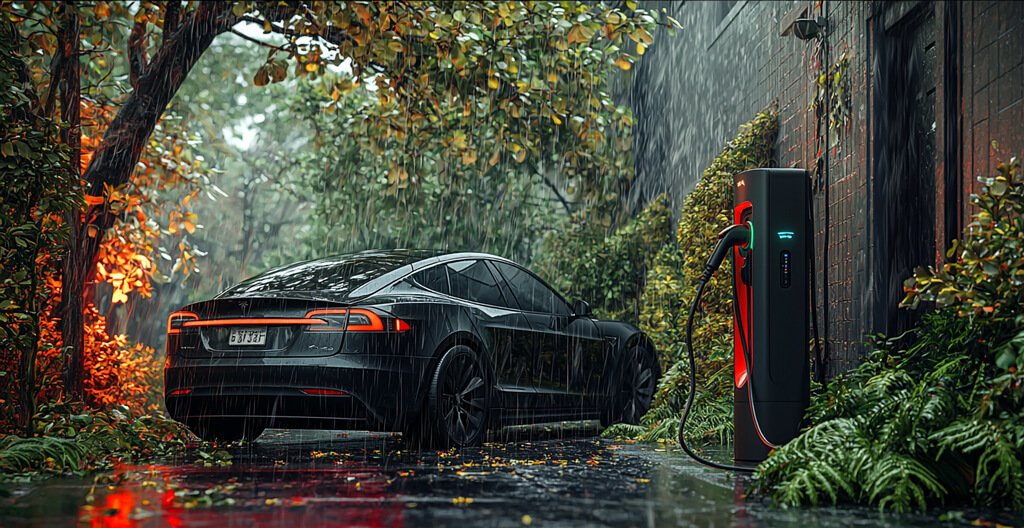With the growing adoption of electric vehicles, EV chargers have become an integral part of modern infrastructure. However, improper maintenance can lead to frequent malfunctions, affecting their longevity. This article will explore common maintenance pain points and provide corresponding solutions to ensure device reliability and long-term service.
Many EV charger failures aren’t due to the equipment’s quality but stem from improper installation location and methods. A common misconception is that if a charger powers on, the installation is fine, but this is far from the truth. Incorrect installation—such as electrical connections that don’t meet standards, insufficient grounding, or placing the charger in an unsuitable environment—can lead to premature damage to the unit. More critically, these installation flaws also pose serious safety risks, including overheating, short circuits, and even fires.
The Solution: Professional Installation is Key
The key to avoiding these problems lies in professional installation. This isn’t a “do-it-yourself” project you should undertake lightly.
Real-world examples clearly demonstrate the value of professional installation. Take the case of a business in California, which saw a remarkable 40% reduction in equipment failure rates for their EV charging units after adopting stringent professional installation procedures. This impressive statistic not only translates to lower repair costs but, more importantly, significantly increased the charging stations’ uptime, leading to more reliable service for customers and ensuring stable revenue for the business. By investing correctly from the start, businesses can avoid costly downtime and maximize the value of their charging infrastructure.
While robust, EV chargers are quite sensitive to environmental factors. High temperatures, high humidity, dust, salt spray, or air pollutants can severely damage the equipment. For instance, continuous high temperatures can cause internal electronic components to overheat and age faster; humidity can trigger corrosion, especially on connectors and circuit boards; and airborne particles can clog ventilation openings, further worsening overheating issues. These environmental stresses can not only lead to decreased charger performance but also significantly shorten their operational lifespan, ultimately increasing your operating costs and maintenance frequency.
To maximize your charger’s lifespan and ensure its continued efficient operation, implementing proper environmental protection measures is crucial:
Research Evidence:
An independent study from an environmental agency strongly demonstrates the effectiveness of these measures. The research indicates that by implementing appropriate shading facilities, the average lifespan of EV charging equipment can be extended by up to 20%. This initial investment will save you substantial repair and replacement costs over the long run.

As technology evolves, chargers need up-to-date software to maintain high performance and security, or they risk cyberattacks and functional degradation.
Solution:
Many operators overlook daily cleaning and component inspections, allowing small issues to escalate into major failures.
Solution:
Delayed responses to charger malfunctions can lead to wider failures and deterioration of the user experience.
Solution:
To ensure the long-term use of EV chargers, operators must proactively address these common maintenance pain points. By implementing precise solutions, chargers’ lifespan will be extended, and their usage safety will be more assured. Maintaining chargers is not just a way to protect investment but also a key to improving user experience.
Yes, EV chargers require regular maintenance. While they are built to be robust, routine checks and cleaning ensure their safe, efficient, and long-lasting operation, and prevent unexpected breakdowns.
Maintenance typically includes:
It’s recommended that professional maintenance be performed by trained technicians, especially for commercial or high-speed chargers. Individual users can perform routine cleaning and visual inspections. Always disconnect power to the charger before maintenance.
Maintenance costs vary depending on the type of charger and its usage.
Beyond preventative maintenance, unexpected repairs, such as damaged cables or connectors, should also be considered, which can add several hundred dollars in costs. Many commercial charging station operators opt for annual maintenance contracts to manage these expenses.
Home EV chargers typically last 5 to 10 years or more, depending on quality, usage frequency, and maintenance. Commercial chargers, especially fast chargers, might have a slightly shorter lifespan due to higher usage, but with proper maintenance, they can also provide many years of reliable service.
Vi kommer att skicka detaljerad teknisk information och offert till dig!